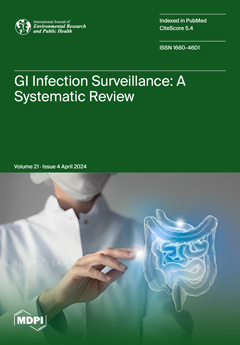Introduction. Sexually transmitted infections (STIs) can be caused by a number of microorganisms that vary greatly in size, life cycle, clinical manifestations, and sensitivity to available treatments. Transmission of STIs can occur during unprotected (or condomless) sexual contact and through the exchange of
[...] Read more.
Introduction. Sexually transmitted infections (STIs) can be caused by a number of microorganisms that vary greatly in size, life cycle, clinical manifestations, and sensitivity to available treatments. Transmission of STIs can occur during unprotected (or condomless) sexual contact and through the exchange of body fluids during any type of activity. The prevalence of sexually transmitted diseases remains high in the world, despite diagnostic and therapeutic improvements for these infectious diseases that rapidly eliminate the contagiousness of patients. Our study determines the prevalence of STI pathogens in adolescents and young adults in the population of the Province of Macerata (Italy). We will analyze data in correspondence to age and gender, and we will compare our results to international studies. Materials and Method. We analyzed STI test results from the entire database of a Provincial Health Authority for the period 2021–2022. The samples came from the following age groups: 0–12, 13–18, 19–25, and 26–35 from 2021 to 2022. The results came from vaginal and cervical swabs (for females); urethral, rectal, and pharyngeal swabs (for males and females); and seminal fluid (for males) for the following infections: HPV,
Chlamydia trachomatis,
Mycoplasma genitalium,
Ureaplasmas,
Gardnerella,
Trichomonas vaginalis,
Neisseria gonorrhoeae, and
Treponema pallidum. The results also came from blood tests for HIV, hepatitis C, hepatitis B, and
Treponema pallidum (TPHA, VDRL). In addition, we examined results from urine tests for chlamydia,
Neisseria gonorrhoeae, trichomonas, and
Treponema pallidum. Conclusions. The literature for other countries reports the need for comprehensive, culturally and developmentally sensitive care to address sexuality-related issues in adolescents and young adults, a need that also applies to Italy. These data will be of great importance in adopting evidence-based STI control programs in Marche Region. This study could, indeed, represent a landmark for public health officials and professionals, with the aim of promoting adolescents’ access to sexual health services to receive useful information, strengthening preventive measures in younger age groups, and designing sexual education programs.
Full article





